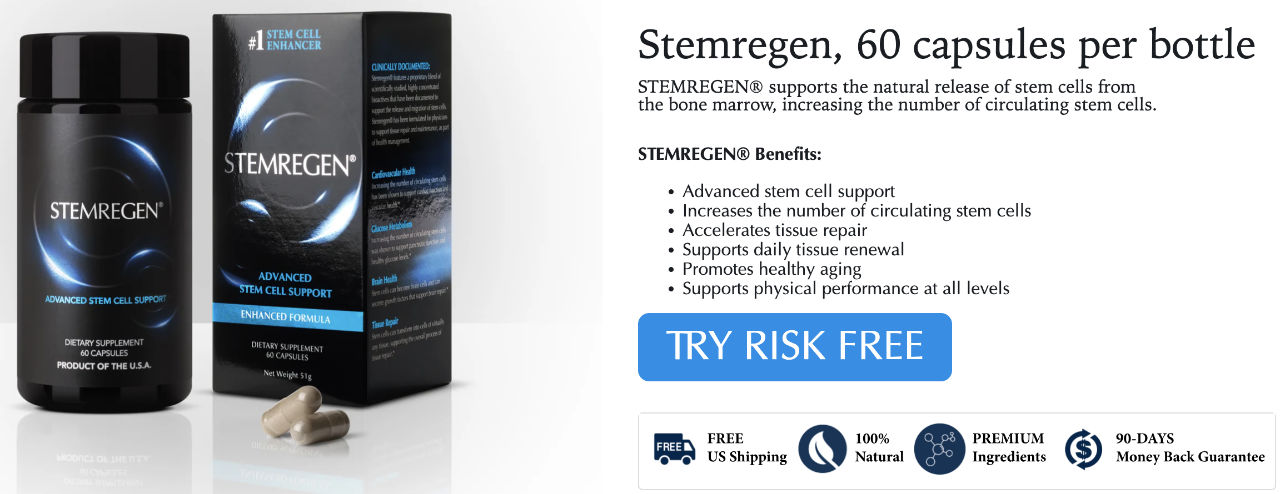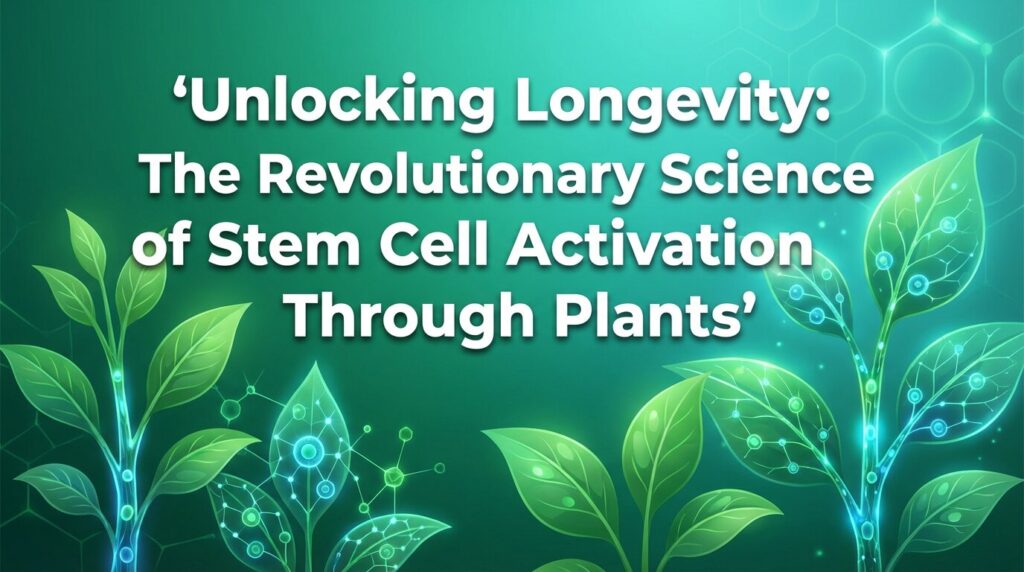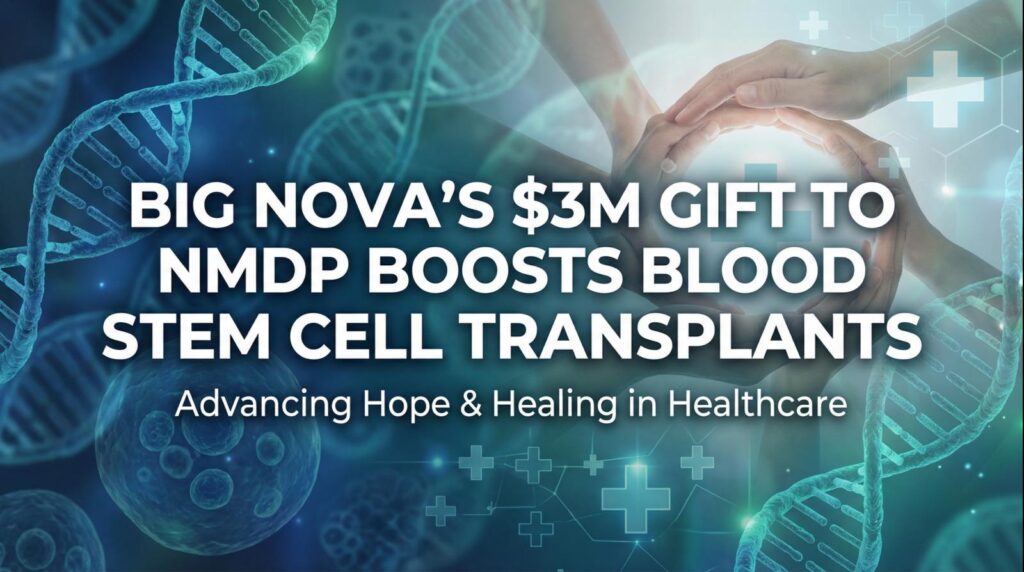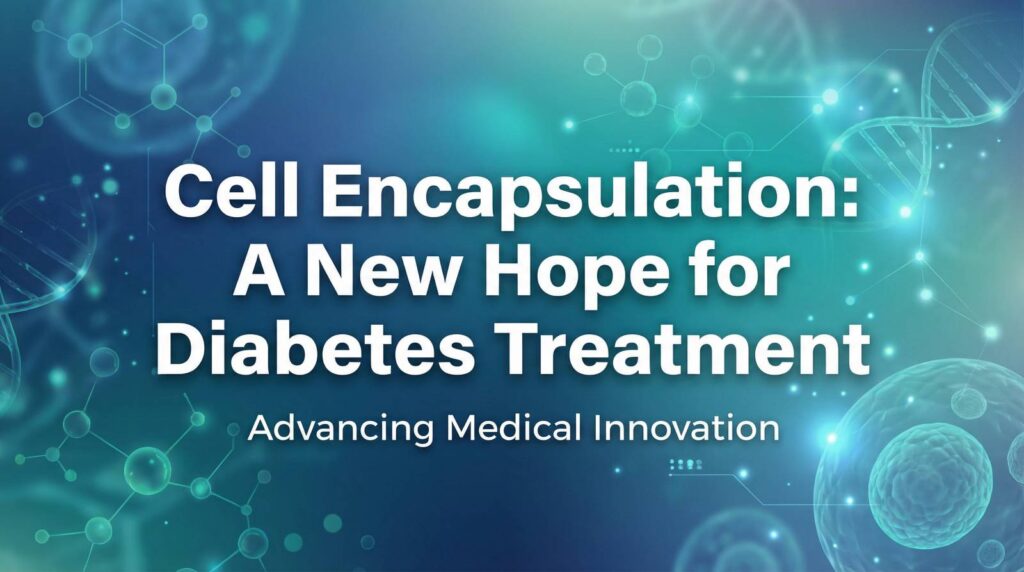Do you wonder why cuts take longer to heal than they used to? Have you noticed that your energy levels drop faster after exercise? Do you feel like your body just doesn’t bounce back the way it did in your twenties?
You’re not imagining things. Your body’s natural repair system is slowing down, and the reason might surprise you.
The answer lies in tiny, powerful cells called stem cells. These cells work like your body’s personal repair crew, fixing damage and keeping you healthy every single day. But here’s the problem: you lose most of these crucial cells as you age.
By the time you reach your thirties, you’ve already lost nearly 90% of your stem cells. This dramatic decline explains why you might feel like you “don’t repair like you used to.”
What Are Stem Cells?
Stem cells are your body’s master cells. They have a unique ability that no other cell possesses: they can transform into any type of cell your body needs.
Think of stem cells as blank pieces of paper. Your body can write instructions on these blank pages, turning them into:
- Heart cells to repair damaged heart tissue
- Skin cells to heal cuts and wounds
- Bone cells to strengthen your skeleton
- Muscle cells to rebuild after exercise
- Brain cells to maintain cognitive function
The Three Key Properties of Stem Cells
| Property | What It Means | Why It Matters |
|---|---|---|
| Self-Renewal | Stem cells can make copies of themselves | Maintains your repair system over time |
| Differentiation | They can become specialized cells | Provides exactly what your body needs |
| Potency | They can create multiple cell types | Offers versatile healing potential |
How Your Body’s Repair System Works
Your body operates like a well-organized construction company. Stem cells serve as the skilled workers who can handle any job that needs doing.
Here’s how the process works:
- Detection: Your body identifies damaged or worn-out cells
- Mobilization: Stem cells receive signals to move to the problem area
- Transformation: Stem cells change into the specific cell type needed
- Repair: New cells replace damaged ones and restore function
- Maintenance: The area continues to be monitored and maintained
Where Do Stem Cells Come From?
Your body stores stem cells in several key locations:
- Bone marrow: The primary storage facility
- Fat tissue: A secondary reservoir
- Blood vessels: Distributed throughout your circulation
- Organs: Local repair teams in specific tissues
Why Stem Cells Decline With Age
The decline in stem cell numbers happens faster than most people realize. Research shows this decline follows a predictable pattern that affects everyone.
Stem Cell Decline by Age
| Age Range | Stem Cell Count | Percentage Remaining |
|---|---|---|
| Birth | 100% | Full repair capacity |
| Age 10 | 75% | Strong healing ability |
| Age 20 | 50% | Good recovery speed |
| Age 30 | 25% | Noticeable slowdown |
| Age 40 | 15% | Significant decline |
| Age 50 | 10% | Major repair issues |
| Age 60+ | 5% | Minimal repair capacity |
What Causes This Decline?
Several factors contribute to the loss of stem cells over time:
Natural Aging Process
- Cellular damage accumulates
- DNA repair mechanisms slow down
- Protective proteins decrease
Environmental Factors
- Stress and poor sleep
- Unhealthy diet choices
- Lack of regular exercise
- Exposure to toxins
Lifestyle Choices
- Smoking and excessive alcohol
- Chronic inflammation
- Sedentary behavior
- Poor nutrition
Signs Your Stem Cell System Needs Support
Your body sends clear signals when your stem cell system isn’t working at full capacity. Pay attention to these warning signs:
Physical Signs
- Cuts and bruises heal slowly
- Joint stiffness and pain increase
- Energy levels drop more quickly
- Muscle recovery takes longer
- Skin loses elasticity and glow
Performance Signs
- Exercise recovery extends
- Mental clarity decreases
- Sleep quality worsens
- Immune system weakens
- Overall vitality declines
The Health Impact of Declining Stem Cells
When your stem cell numbers drop, every system in your body feels the impact. Understanding these effects helps explain many age-related health changes.
Cardiovascular System
- Heart muscle repair slows
- Blood vessel flexibility decreases
- Circulation becomes less efficient
- Recovery from heart stress takes longer
Musculoskeletal System
- Bone density gradually decreases
- Joint cartilage wears down faster
- Muscle mass and strength decline
- Tendon and ligament repair slows
Skin and Appearance
- Collagen production drops
- Wound healing becomes slower
- Wrinkles and age spots appear
- Skin thickness and elasticity reduce
Immune System
- Infection fighting ability weakens
- Inflammation increases
- Autoimmune risks rise
- Recovery from illness extends
Types of Stem Cells in Your Body
Not all stem cells are the same. Your body uses different types for different purposes, each with specific roles in maintaining your health.
Adult Stem Cells
Hematopoietic Stem Cells
- Location: Bone marrow
- Function: Create blood cells
- Importance: Immune system and oxygen transport
Mesenchymal Stem Cells
- Location: Bone marrow, fat, connective tissue
- Function: Build bones, cartilage, fat, muscle
- Importance: Structural repair and support
Neural Stem Cells
- Location: Brain and spinal cord
- Function: Generate brain and nerve cells
- Importance: Cognitive function and nerve repair
Epithelial Stem Cells
- Location: Skin, intestines, lungs
- Function: Maintain protective barriers
- Importance: Organ function and protection
How to Support Your Stem Cell Health
The good news is that you can take steps to support your stem cell system and slow the decline. Research shows that certain lifestyle choices and interventions can help maintain and even boost stem cell function.
Natural Ways to Support Stem Cells

Exercise and Movement
- Regular exercise stimulates stem cell release
- Resistance training builds muscle stem cells
- Cardiovascular exercise improves circulation
- Flexibility work maintains joint health
Nutrition for Stem Cell Health
- Antioxidant-rich foods protect cells
- Omega-3 fatty acids reduce inflammation
- Protein supports cell building
- Vitamins and minerals provide essential nutrients
Sleep and Recovery
- Deep sleep triggers repair processes
- Growth hormone release peaks during sleep
- Cellular cleanup happens at night
- Stress hormones decrease with good sleep
Stress Management
- Chronic stress damages stem cells
- Meditation and relaxation help
- Social connections boost health
- Purpose and meaning matter
Foods That Support Stem Cell Function

| Food Category | Examples | Key Benefits |
|---|---|---|
| Antioxidant Foods | Berries, dark leafy greens, green tea | Protect cells from damage |
| Omega-3 Sources | Fish, walnuts, flax seeds | Reduce inflammation |
| Protein Foods | Lean meats, eggs, legumes | Provide building blocks |
| Colorful Vegetables | Carrots, peppers, tomatoes | Supply essential nutrients |
The Science Behind Stem Cell Research
Stem cell research has exploded in recent years, revealing exciting possibilities for health and longevity. Scientists now understand much more about how these cells work and how to support them.
Key Research Findings
Clinical Studies Show:
- Exercise increases stem cell numbers by up to 300%
- Certain plant compounds boost stem cell activity
- Intermittent fasting may stimulate stem cell renewal
- Stress reduction improves stem cell function
Recent Breakthroughs:
- Scientists can now track stem cells in real-time
- New methods measure stem cell activity accurately
- Plant-based compounds show promise for support
- Lifestyle interventions prove highly effective
The Future of Stem Cell Health
Research continues to reveal new ways to support your body’s natural repair system. Scientists are studying:
- Advanced stem cell tracking methods
- Natural compounds that boost stem cell function
- Lifestyle protocols for optimal stem cell health
- Personalized approaches based on individual needs
Stem Cell Myths vs. Facts
Many misconceptions exist about stem cells. Let’s separate fact from fiction to help you make informed decisions about your health.
Common Myths Debunked
Myth: Stem cell decline is inevitable and unstoppable
Fact: Lifestyle choices significantly impact stem cell health
Myth: Only expensive treatments can help stem cells
Fact: Natural methods effectively support stem cell function
Myth: Stem cell supplements don’t work
Fact: Research shows certain compounds can boost stem cell activity
Myth: You need stem cell injections to see benefits
Fact: Supporting your existing stem cells often works better
Warning Signs You Need Stem Cell Support
Your body provides clear signals when your stem cell system needs attention. Recognizing these signs early allows you to take action before problems worsen.
Early Warning Signs
- Slower healing from minor injuries
- Increased fatigue after normal activities
- Joint stiffness in the morning
- Reduced exercise recovery
- Changes in skin texture and appearance
Advanced Warning Signs
- Chronic pain that doesn’t improve
- Frequent infections or illness
- Significant energy decline
- Memory and focus problems
- Multiple health issues appearing together
Taking Action for Your Stem Cell Health
Understanding stem cells is just the first step. The real benefit comes from taking action to support your body’s natural repair system.
Start With These Simple Steps
- Move Your Body Daily
- Take a 30-minute walk
- Add resistance exercises twice weekly
- Include flexibility and balance work
- Eat Stem Cell Supporting Foods
- Fill half your plate with colorful vegetables
- Include omega-3 rich foods daily
- Choose antioxidant-rich fruits and vegetables
- Prioritize Quality Sleep
- Aim for 7-9 hours nightly
- Create a consistent sleep schedule
- Make your bedroom cool and dark
- Manage Stress Effectively
- Practice daily relaxation techniques
- Build strong social connections
- Find activities that bring you joy
Consider Professional Support
While lifestyle changes form the foundation of stem cell health, some people benefit from additional support. Consider consulting with healthcare providers who understand stem cell science and can guide you toward evidence-based approaches.
The Bottom Line on Stem Cells and Your Health
Your stem cells represent your body’s most powerful healing system. While their numbers naturally decline with age, you have significant control over how well this system functions.
The key is to start supporting your stem cell health now, regardless of your current age. Every positive change you make helps preserve and enhance your body’s natural repair capacity.
Remember: you don’t have to accept declining health as an inevitable part of aging. By understanding and supporting your stem cells, you can maintain vitality, energy, and health for years to come.
Your body wants to heal and repair itself. Give it the support it needs, and you might be surprised by how much better you can feel.



